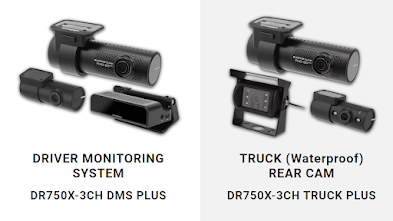Managing a fleet is no easy task. Rising operational costs, driver shortages, and customer demands often create challenges that disrupt your operations. Whether you’re managing a fleet, working with carriers, or handling shipments, transportation difficulties can quickly escalate. Without a solid solution, your business could be facing inefficiencies, missed opportunities, and unhappy customers.
That’s where smarter monitoring tools come in. These advanced systems not only keep your operations running smoothly but also offer insights and automation that transform transportation management. Let’s take a closer look at how these game-changing tools are benefiting transporters, helping them reduce costs, boost efficiency, and keep customers satisfied.
Cost Reduction Through Real-Time Data
Every transportation decision impacts your bottom line, and that’s why monitoring tools are invaluable. They provide real-time visibility into fuel consumption, route efficiency, and even driver performance, enabling you to make data-driven decisions.
How does this benefit your bottom line? Smarter tools track key metrics like fuel usage, mileage, and idle times, helping you pinpoint areas of waste. By optimising routes and reducing unnecessary trips, you can save fuel, lower maintenance costs, and maximise the utility of each vehicle in your fleet. Additionally, by providing accurate data on Driver Monitoring Systems, you can offer coaching to improve fuel efficiency and minimise vehicle strain.
Real-Time Visibility for Better Decision-Making
When you can't see what's happening across your network, your ability to make informed decisions is compromised. Monitoring tools eliminate this blind spot by providing real-time updates on fleet movements, traffic conditions, and delivery statuses.
With this constant stream of data, you can make proactive adjustments before delays or issues escalate. Whether a truck is stuck in traffic or an order is at risk of being late, smarter monitoring tools give you the power to adjust routes, reassign loads, or even notify customers with updated timelines. This helps you avoid disruptions and keep everything running on time.
Improved Fleet Efficiency and Utilisation
Running a fleet involves many moving parts, and ensuring efficiency is key to maximising profitability. Smarter fleet tracking tools provide an in-depth view of fleet operations, tracking vehicle utilisation, route performance, and maintenance schedules.
By analysing these insights, transporters can identify underutilised assets, streamline route planning, and ensure that vehicles are operating at peak efficiency. With predictive maintenance capabilities, these tools can even notify you of potential mechanical issues before they become costly breakdowns. This keeps your fleet in motion and reduces downtime, which translates to more deliveries, fewer repairs, and better ROI.
Enhanced Customer Service with Predictability
In the transportation world, customer expectations are higher than ever. Customers want their goods delivered faster, with real-time updates and clear visibility. Smarter monitoring tools ensure you can meet and exceed these expectations.
With tools that provide tracking and delivery notifications in real-time, your customers will always know where their shipment is and when it’s expected to arrive. This transparency builds trust and reduces customer inquiries, while also enhancing your brand’s reputation for reliability. Furthermore, with predictive delivery tracking, you can provide more accurate delivery windows, further impressing your customers.
Optimised Routes for Faster Deliveries
One of the biggest pain points in transportation is route optimisation. Without proper fleet tracking tools, drivers can end up wasting hours in traffic or taking inefficient routes, eating into your profits.
Smarter monitoring tools come equipped with route optimisation features that factor in traffic, weather, road closures, and delivery deadlines. These tools design the most efficient routes based on real-time data, making sure deliveries are made on time while saving fuel and reducing operational costs. The result is faster deliveries and happier customers, without sacrificing your margins.
Better Compliance and Safety Management
The transportation sector operates under strict regulations, and staying compliant with safety standards and laws can be a challenge. Smarter monitoring tools simplify compliance by tracking driver behaviour, hours of service, and vehicle inspections.
By automatically recording and managing these critical data points, these tools ensure that you remain compliant with regulations, helping you avoid the risk of fines and legal trouble.
Additionally, monitoring tools help improve safety by identifying risky driving behaviours, such as excessive speeding or harsh braking. Tackling these issues proactively not only guarantees legal compliance but also fosters a safer working environment for your drivers.
Scalability for Growing Operations
As your transportation operations expand, the complexity of managing routes, fleets, and deliveries grows. Smarter monitoring tools offer scalability, allowing you to easily manage increased volume without a proportional increase in overhead.
With advanced tools that integrate seamlessly with other management systems, you can scale your operations without losing efficiency. These tools support adding new vehicles, routes, or even third-party carriers without disrupting your operations, ensuring that your growth is smooth and sustainable.
Proactive Problem Solving
In transportation, problems are inevitable. A delivery gets delayed, a truck breaks down, or a driver encounters a detour. But with smarter monitoring tools, you’re not left scrambling when an issue arises. These tools provide real-time alerts, allowing you to proactively address problems before they escalate.
For example, if a truck’s arrival is delayed due to a mechanical failure, you can receive an alert, track the vehicle’s status, and quickly re-route shipments or notify the customer. This proactive approach minimises disruptions, keeps your operations efficient, and prevents small problems from escalating into costly setbacks.
Conclusion: Smarter
Tools, Smarter Transport
In an industry where efficiency and customer satisfaction are crucial, embracing smarter monitoring tools has become a necessity. By investing in these tools, transporters can lower costs, improve operational efficiency, enhance customer service, and stay ahead of the competition.
Don’t let inefficiencies and unexpected disruptions derail your business. With smarter monitoring tools, you can navigate the challenges of modern transportation with confidence and control.
Ready to take your
operations to the next level? Explore Driver Monitoring Systems and Fleet
Tracking tools to unlock the benefits they can bring to your transportation
business.




